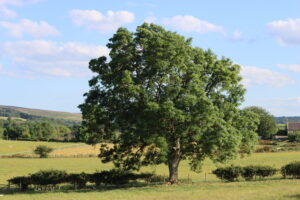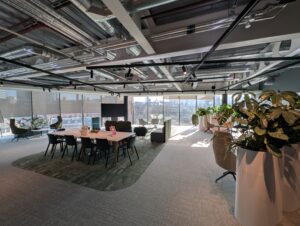It is more important now than ever that continued government funding for parks and green spaces is kept as a high priority, particularly when mental health is reported to have deteriorated during the lockdown.
How does walking through a forest make you feel? Peaceful? Blissful? Reflective? For many people, lockdown brought a new appreciation of nature and what it means for our well-being.
The health benefits of immersing ourselves in ‘green space’ are now widely accepted.
Living in areas with grass and trees has been linked to lower risk of various health conditions such as high blood pressure and cardiovascular disease. As well as physical health, greenspace is associated with positive mental health.
A recent study found that people who spent at least two hours in nature per week were consistently more likely to report higher levels of health and well-being compared to people who spent less time in nature.
Our work seeks to understand exactly how greenspace programmes can improve mental health. A greenspace programme, or nature-based intervention, is a health project typically run outside in parks, woodland, forests and other greenspace areas.
These programmes can be designed for anyone, but have been shown to be particularly beneficial for those with poorer mental health.
Projects can range from structured therapy programmes such as adventure, wilderness and horticultural therapies, to less formal activities such as community gardening, guided walks and the Japanese notion of ‘forest bathing’ or shinrin-yoku.
We are currently working on developing a framework for those wishing to start up such initiatives. This is an important area of research because while there is an increasing number of greenspace programmes for mental health, there is still limited understanding of the key components that make these projects successful.
This makes it difficult to develop and implement new programmes and evaluate them successfully.
Mental health and nature
In our recent review we showed that greenspace programmes are successful in improving mental health due to seven interacting factors: the feeling of escape and getting away; having space to reflect; physical activity; learning to deal with things; having a purpose; relationships with programme leaders; and shared social experiences.
Using these components we created a new framework for greenspace programmes for mental health that showed exactly how positive outcomes can be best achieved.
We believe this framework could provide a working model for future programme development.
However, our findings also show that greenspace programmes do not work for everybody equally and seem to be more successful in improving mental health for some people than others.
For example, mobility issues may limit a person’s ability to take part in physically demanding programmes. Wilderness projects might not be appropriate for people who may suffer from conditions such as psychosis.
And overnight programmes or early starts may not be suitable for those on daily pick-up prescriptions such as methadone.
Greenspace programmes have been successful in supporting people who have been involved in offending – but these individuals might be limited to where they can go. These inequalities in programme suitability are important to highlight since the people who are not able to access these initiatives might be the ones who benefit the most.
Greenspace and inequality
Recently, COVID-19 has revealed the inequalities that exist when it comes to access to green spaces. There have been many petitions to keep parks and gardens open for public use, with green spaces described as crucial for our well-being.
But the availability of greenspace differs depending on where you live. Affluence allows people to buy homes in areas that have more green spaces and access to nature, less air pollution and more space for physical activity. If someone has less access to local parks, gardens and playing fields, they are far less likely to gain the benefits that those spaces can provide.
These inequalities clearly existed before COVID-19, but the pandemic brought a wider awareness that easy access to existing green spaces was not an opportunity available to everyone.
Using London as an example, the wealthiest areas have around 10% more public space compared to the most deprived areas. Approximately half of the residents in the most deprived areas of London are from minority backgrounds.
Some evidence shows that those living in the most deprived areas will actually benefit more from local green spaces, compared to those in more affluent areas – and that green space can help reduce the health inequality between high and low-income groups.
This could be due to poorer communities spending more time in their local areas, and affluence allowing people to travel further from their homes more regularly.
High-quality green spaces and access to nature should be available and easily accessible for everyone, but it is clear that this is currently not the case. With further funding cuts to the quantity and quality of green spaces, it is likely that the poorest communities will suffer the most.
What should be done?
Funding for public services is now going to be stretched even further.
But it is more important than ever that continued government funding for parks and green spaces is kept as a high priority, particularly when mental health is reported to have deteriorated during the lockdown.
This funding must not be limited to popular beauty spots or tourist areas, but be prioritised to areas where people who are commonly overlooked may benefit the most. Not only are parks and green spaces crucial for our mental health and important for reducing inequalities, but quality spaces and green development are essential in the ongoing fight against climate change – it’s good for people and it’s good for the planet.
Photo Credit – Pixabay















